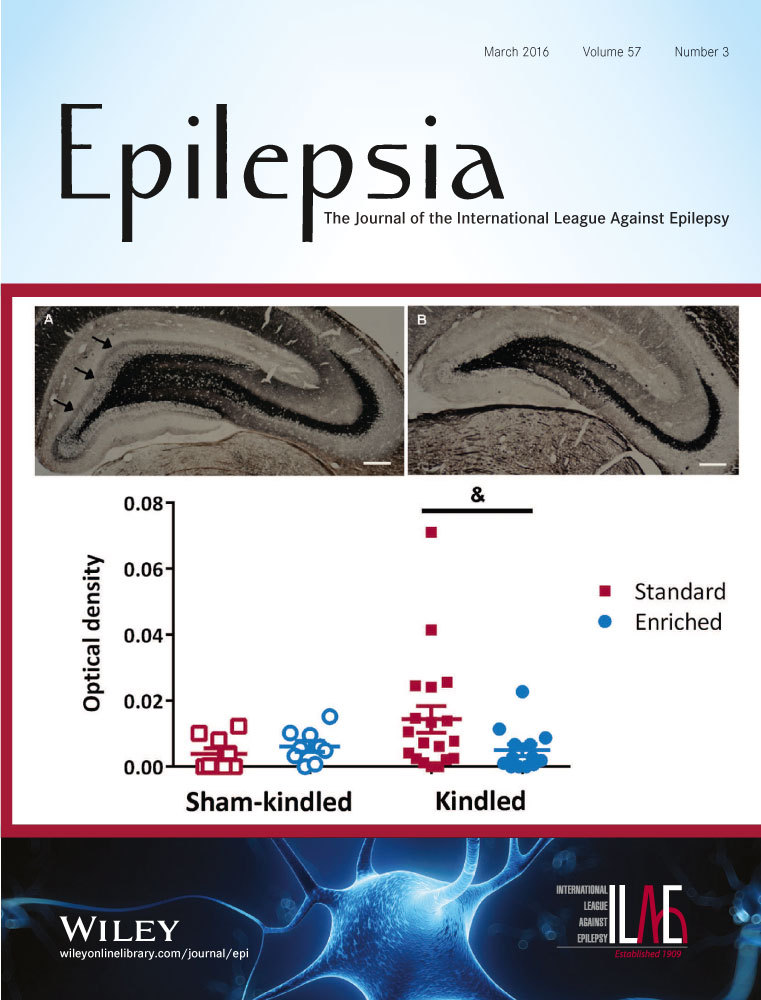Environmental enrichment delays limbic epileptogenesis and restricts pathologic synaptic plasticity
Summary
Objective
Environmental exposures impart powerful effects on vulnerability to many brain diseases, including epilepsy. Mesial temporal lobe epilepsy (MTLE) is a common form of epilepsy, and it is often accompanied by neuropsychiatric comorbidities. This study tests the hypothesis that environmental enrichment (EE) confers antiepileptogenic, psychoprotective, and neuroprotective effects in the amygdala kindling model of MTLE, and explores potential neurobiologic mechanisms.
Methods
At weaning, male Wistar rats were allocated into either EE (large cages containing running wheels and toys; n = 43) or standard housing (SH; standard laboratory cages; n = 39) conditions. At P56, a bipolar electrode was implanted into the left amygdala, and rats underwent rapid amygdala kindling until experiencing five class V seizures (Racine scale, fully kindled). The elevated plus maze was used to assess anxiety. Postmortem histologic and molecular analyses investigated potential biologic mediators of effects.
Results
EE significantly delayed kindling epileptogenesis, with EE rats requiring a significantly greater number of kindling stimulations to reach a fully kindled state compared to SH rats (p < 0.05). EE and kindling both reduced anxiety (p < 0.05). Timm's staining revealed significant reductions in aberrant mossy fiber sprouting in EE rats (p < 0.05), and these effects of EE were accompanied by reduced expression of TrkB and CRH genes.
Significance
We identify beneficial effects of EE on vulnerability to limbic epileptogenesis and anxiety, and identify reduced pathologic neuroplasticity and plasticity-related gene expression as potential underlying mechanisms. Enhanced environmental stimulation represents a potential antiepileptogenic strategy that might also mitigate the common psychiatric comorbidities of MTLE.




